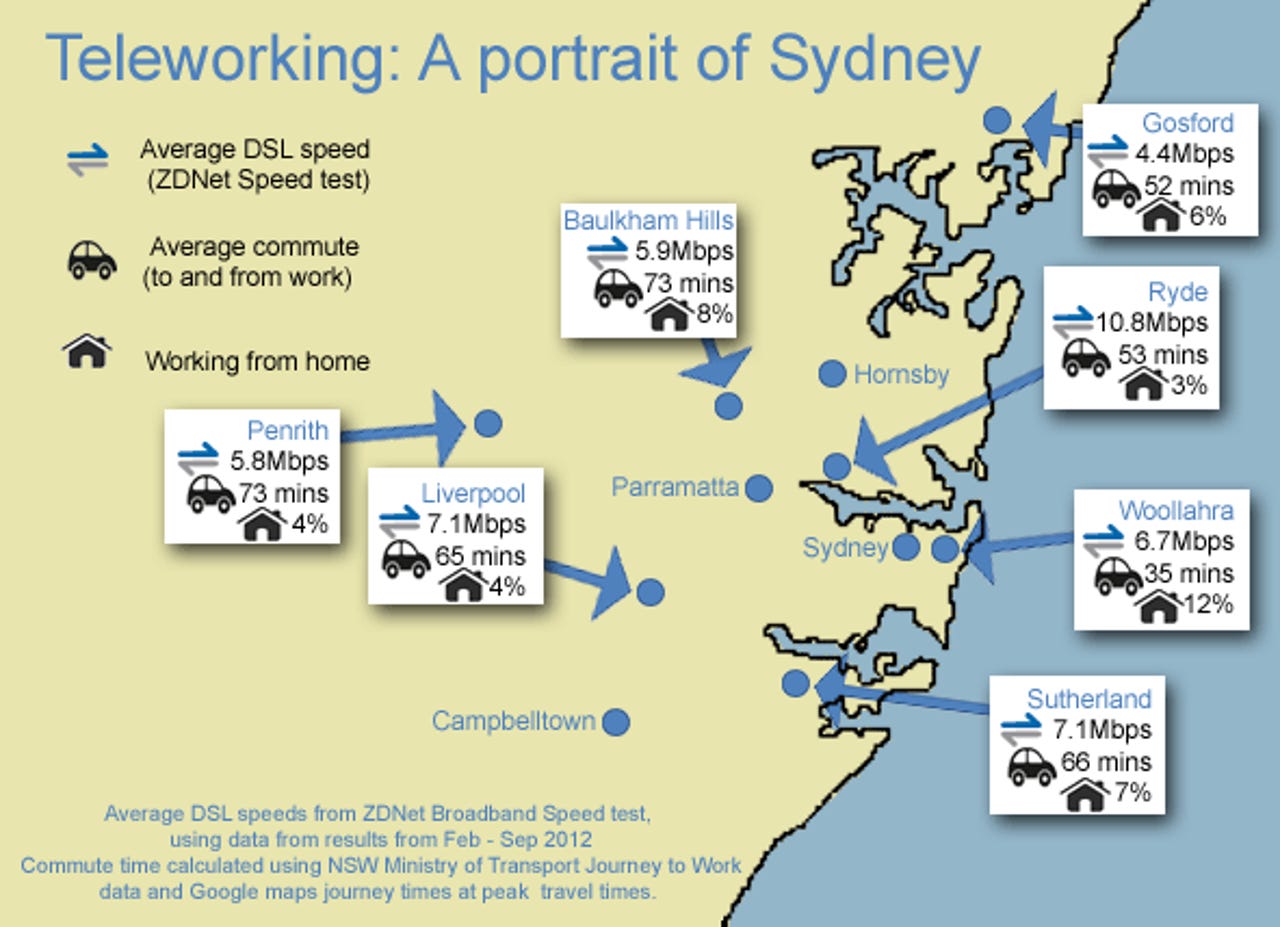By the numbers: Teleworking and the Sydney commute

For many Sydneysiders, there's nothing unusual about spending an hour or more on the road each day getting to and from work. It's a similar story — though less extreme — for big cities across the country.
Figures from the NSW Government Bureau of Transport Statistics show the commute patterns, collected from the 2006 census (figures from the last census won't be available till next March). Applying the peak hour journey time from Google Maps to each trip enables a rough calculation of the average time spent getting to and from work. For example, 4,120 people travelled from their home in Baulkham Hills to Ryde — a journey time of 41 minutes and a return trip of 82 minutes. That average is reduced by shorter trips, including those people who live and work in Baulkham Hills. The result for the suburbs works out at 52 minutes of commuting per day.
As this map shows, those in the Greater West and North West suffer the worst commute times. In large parts of the city, it seems, you'd be lucky to get away with less than an hour on the road. Even if we assumed a city-wide average of 45 minutes, that's 1.7 million working hours lost each day.

Yet, despite the inconvenience and angst of Sydney traffic, few people work from home. The 2006 census shows that only 4 percent of employed people chose the option on the day. Lifting this to 10 percent would remove 140,000 commuters from the roads, and save 100,000 hours of travel time each day. The Australian Bureau of Statistics (ABS) reckons that we work, on average, 40 hours a week (I wish), so the saved time would equate to 2,500 full time jobs. With an average job worth AU$1,058 per week, if the time saved was translated into output, then we'd see income improve by AU$2.6 million per week, or AU$137 million per year, just in Sydney. It's a chunk of money, but is it enough to justify the infrastructure investment of the NBN? Not on its own, that's for sure.
In fact, there's a big question mark over just how far technology can push telecommuting forward. The proportion of people working from home doesn't seem to relate to internet connection speeds (based on our analysis of the ZDNet Broadband Speed Test from February — September 2012).
Instead, it's the wealthier suburbs that are most likely to work from home, with more people employed in managerial or professional roles. It's realistic that they can spend some of their time in the home office. But a quarter of the Sydney workforce is made up of community workers, machine operators, or labourers — they'll always have to go to work. Almost as many are sales people or tradespeople — they're working all over the place now, and that pattern is unlikely to change. That leaves the market for more flexible working arrangements with the third of the workforce in managerial and professional roles.
If that's the case, the NBN could benefit the well-healed suburbs the most. It's a shame, then, that whilst Mosman and Double Bay are on the schedule for three years' time, places like Auburn and North Strathfield start within a year, and the moneyed suburbs north of Chatswood aren't even on the radar.
If the design can take account of bringing the greater economic benefit forward, then arguably, consideration should have been given to the suburbs with the highest managerial and professional workforce, and with the longest commute times. But then again, I would say that. I live in Wahroonga.